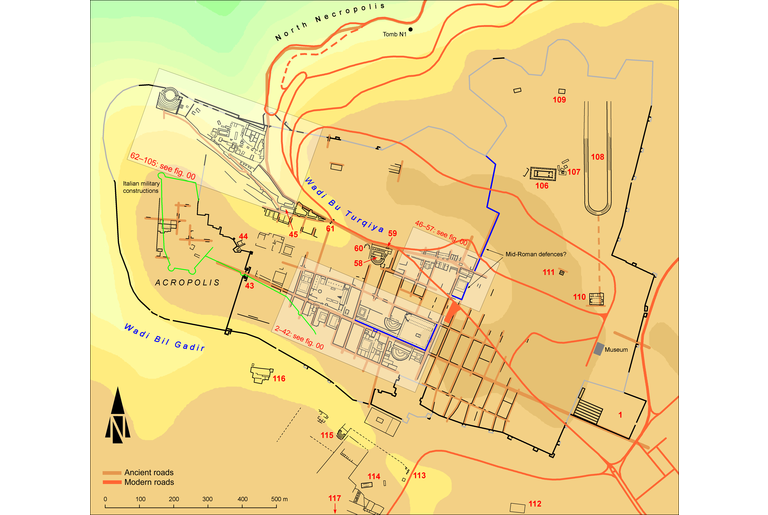Dedication to the Nikai (?)
IGCyr134700
Trismegistos ID: 738894
Source Description
Support
A rock-cut altar with two compartments, one hollowed out to the right, the other shallow to the left (for one compartment (?) 0.27; 0.10;0.195); the hollow at right was closed with a stone lid and contained miniature vases.
Layout
Inscribed on the front below the right (?) compartment.
Letters
0.035-0.038, deeply cut; dissymmetrical nu, slanting, narrow and taller sigma.
Place of Origin
Findspot.
Date
Perhaps end of fifth or beginning of fourth century B.C. (lettering)
Findspot
Found between 2008 and 2010 by the Mission of Urbino at Cyrene pleiades; HGL : Southern Extra-Mural Sacred Zone , North-West of the Extra-Mural Temple of Demeter .
Last recorded Location
First studied in 2010 by A. Inglese in situ.
Text constituted from
Transcription from editor CDL.
Bibliography
Inglese, 2013 Inglese, A., 2013, Il santuario di Demetra a Cirene. Le iscrizioni, in Inglese, A., Epigrammata 2. Definire, descrivere, proteggere lo spazio, in ricordo di André Laronde. Atti del convegno di Roma, 26-27 ottobre 2012, Tivoli, 231-251, 437-439 - see in bibliography , pp. 236-238, 434, 439 (ph.). Cf. Gasparini-Rosamilia, 2016 Gasparini, M., Rosamilia, E., 2016, I nuovi altari rupestri extraurbani dallo Uadi Belgadir e il culto di Zeus e delle Eumenidi, in V. Purcaro, O. Mei, Cirene greca e romana II, Monografie di archeologia libica, 44, Cirene Atene d'Africa9, 189-217 - see in bibliography , pp. 197, 203.
Apparatus
French translation
Pour les Nikai (?).
English translation
For the Nikai (?).
Italian translation
Per le Nikai (?).
Arabic translation
لأجل نايكي (؟).
Commentary
This altar, found and published before the series IGCyr133300 to IGCyr133800, is situated just near the first mentioned. The support is the same, but the inscription is different and puzzling.
When publishing it, A. Inglese proposed two interpretations: 1) a masculine personal name, which she thought was also attested at Cyrene; 2) the dative plural of the name of the divine name Nike, i.e. Victory, although no parallel is known. E. Rosamilia, when publishing the rest of the inscribed altars, mentioned again this one and preferred the interpretation with the Nikai.
C. Dobias-Lalou's supplementary comment: 1) The personal name: we have now three such mentions, all from Taucheira, all from the first century A.D. (see Fraser-Matthews, 1987 Fraser, P.M., Matthews, E. (eds.), 1987, Lexicon of Greek Personal Names, I: The Aegean Islands, Cyprus, Cyrenaica, Oxford - see in bibliography , pp. 328-329, clumsily divided in two entries). Names ending with -ιος were at the time often reduced to -ις. This one is thus a variant of Nikaios. But it does not match the presumed date of the lettering and of the archaeological context. 2) The Nikai: a dedication at the dative on such altars is quite uncommon. However in the same area we have now this case for one Eumenide and Melichios (IGCyr133400). The most puzzling point in this hypothesis is the presence of Victories (and the plural!) in a cultual zone devoted to Zeus and the Eumenides.
Creative Commons Attributions-NonCommercial 4.0 International License.
All citation, reuse or distribution of this work must contain a link back to DOI: http://doi.org/10.6092/UNIBO/IGCYRGVCYR and the filename (IGCyr000000 or GVCyr000), as well as the year of consultation.
